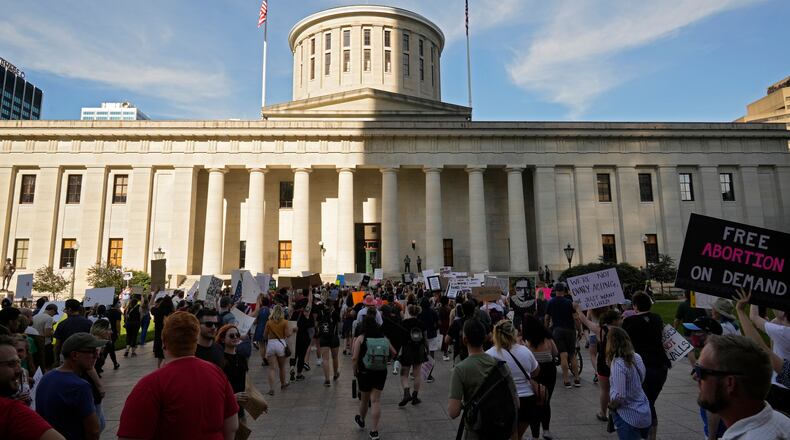The bills have received scorn from Democrats, activist groups like Ohioans for Reproductive Freedom and Ohio Physicians for Reproductive Rights who are leading the citizen petition initiative to codify legal abortion into the state constitution. Over 100 individuals and groups testified in opposition of the measures during committee hearings this week.
The legislation, if enacted, would bring a sweeping change to the direct access Ohioans have had to constitution since Ohio first adopted a citizen petition amendment process back in 1912 — putting the abortion-rights amendment and any other citizen-led amendment in doubt. This quick explainer will help get you -up-to-date on the legislation before lawmakers reconvene April 27.
So, what are the proposals?
House Joint Resolution 1 and the Senate’s identical Senate Joint Resolution 2 propose a constitutional amendment that, if passed by a simple majority of Ohioans, would:
- Change the voter threshold required to amend the Ohio Constitution.
- HJR1 would require any future constitutional amendment to be approved by at least 60% of the vote (AKA a “supermajority”)
- Currently, constitutional amendments are statewide ballot initiatives that pass with a simple majority (often referred to as “50% + 1″)
- Modify the procedures for an initiative petition proposing constitutional amendment.
- Currently, Ohioans can put a proposed constitutional amendment on the ballot through a petition. Since 1912, petitioners have been required to collect signatures from 5% of the electorate in 44 of the state’s 88 counties. HJR1 proposes to raise that requirement to all 88 counties.
Important context:
In order to get baked into the Ohio Constitution itself, this amendment would need to be approved by Ohio voters via a ballot initiative in a statewide election, and the next scheduled election is in November.
It’s important to note both the reasoning behind the resolution and why its most ardent proponents want the Ohioans to vote on it as soon as possible.
- HJR1 is only immediately useful to anti-abortion lawmakers if it passes before Ohioans get a chance to vote on the abortion-rights ballot initiative to protect abortion access protections into the Ohio Constitution — an initiative that, under current law, would likely get on the ballot this November.
- Recent polling suggests a majority of Ohio registered voters support a constitutional amendment protecting abortions rights — but not necessarily 60% of voters support it.
- So, the question is: How can Republican lawmakers have Ohioans vote on HJR1 before they vote to protect abortion access? Enter: Senate Bill 92.
Senate Bill 92 and the House’s identical House Bill 144 is a Republican-backed bill that would:
- Give the General Assembly the power to call for an August special election for statewide ballot initiatives.
- Appropriate $20 million for the purposes of holding a special election this coming August.
- Allow the General Assembly to place a proposed constitutional amendment on the ballot at an August special election, if authorized by a joint resolution.
- Note: This function of the bill specifically excludes citizen petition initiatives, which would mean Ohio’s pro-choice ballot initiative could not appear on August’s ballot.
Important context:
Ohio lawmakers in December did away with most August special elections noting they are costly and typically have low turnout.
Where are we now?
Last week, the Senate passed both SJR2 and SB92 by mostly party line votes.
The House still needs to pass their two measures and Gov. Mike DeWine needs to sign off on the August special election bill before everything can go into motion — but there’s a shot clock. The Ohio Secretary of State says this needs to be done before May 10 to give elections boards time to prepare.
The House referred HJR1 out of committee after a contentious week of hearings. The resolution needs 3/5 support in a full floor vote in order to pass.
Regarding the August election component, there’s been little movement in the House. HB144 was referred to the General Oversight committee on April 19. SB92 was also introduced to the House, should they move forward with that option.
About the Author

